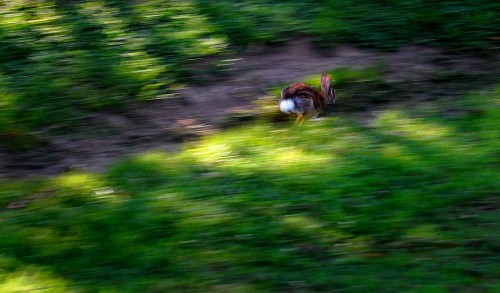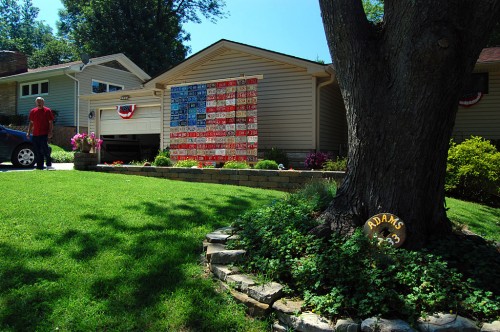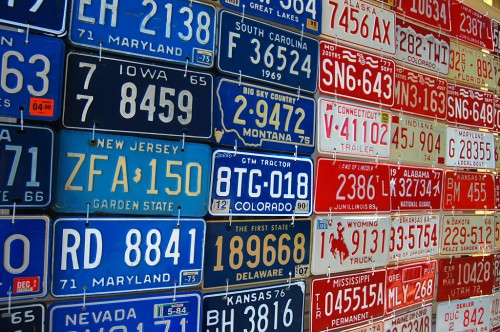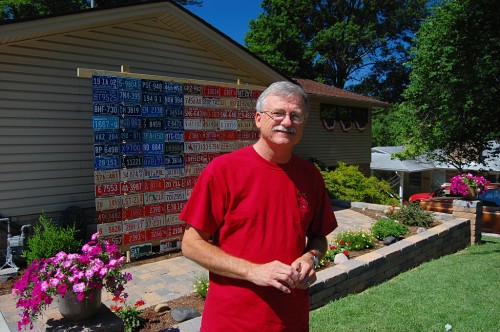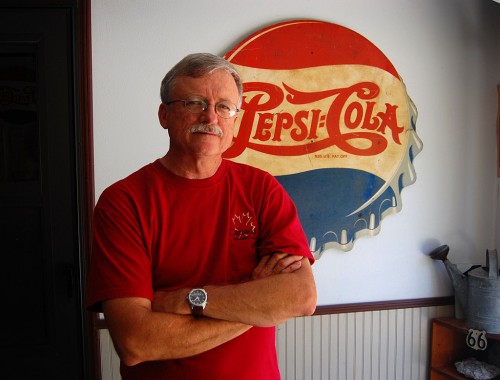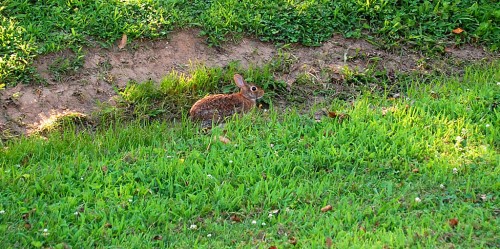 Many photographers think that faster shutter speeds are better. It’s true that a fast shutter speed will minimize camera shake on your end and subject movement on the far end. That’s usually a good thing. It can also be a formula for a dull photo. I was walking around Franklin School shooting an update now that construction of the new building is under way. (I’ll publish those photos in a day or so. I figure everybody is busy blowing things up this weekend, so I may hold off posting until there is someone around to see it.)
Many photographers think that faster shutter speeds are better. It’s true that a fast shutter speed will minimize camera shake on your end and subject movement on the far end. That’s usually a good thing. It can also be a formula for a dull photo. I was walking around Franklin School shooting an update now that construction of the new building is under way. (I’ll publish those photos in a day or so. I figure everybody is busy blowing things up this weekend, so I may hold off posting until there is someone around to see it.)
This cute little bunny rabbit was chowing down on the clover along the terrace in front of the school. I shot a quick frame and kept walking to go up the stairs to photograph the main entrance and flag pole. The bunny is reasonably sharp and relatively well exposed. It’s also not very interesting, unless, of course, you care more about bunnies than I do. (You might have a better idea what I’m talking about if you click on the image to make it larger.)
How to capture a feeling of speed
First off, I’m going to confess that this photo of the rabbit blasting out is an example of instinct and luck. I didn’t plan it. HAD I planned it, here are some things I would have done:
- I would have picked a relatively show shutter speed.
- I would have put the moving subject in the middle of the frame.
- I would have opened the shutter when the subject was slightly less than 90 degrees from me.
- I would have panned (followed) the subject at the same speed it was moving.
- I would have continued the pan until I heard the shutter close.
What does panning do?
What does that accomplish? It keeps the subject recognizably sharp, but makes the background a blur. We’re used to looking out the car window and watching the scenery go by so quickly that it’s a blur. That’s how we know that we’re moving and how fast. This isn’t a great shot, but it has some interesting things helping it out.
- The back ground light coming from behind the rabbit is mottled. That pattern of light and dark accentuates the feeling of blur and speed.
- The backlight coming through the rabbit’s ears makes them stand out and look pink.
- He’s caught in mid-hop, so the bulk of his body is stationary. You can clearly read “rabbit” from the ears and cottontail.
Why did I say it was instinct and luck? I had set the basic exposure, but left the camera on automatic. Because it was getting late in the day and I was in the shadows, the camera opted for a slow shutter speed serendipitously. When I saw the rabbit start to move, I followed the movement out of habit and practice.
I’m not a hunter, but I was a decent shot and was pretty good for an amateur the couple of times I tried shooting skeet. There’s not a whole lot of difference between shooting with a camera and with a gun. (Except that the rabbit gets to run away to eat clover another day.)
What a difference a millisecond makes
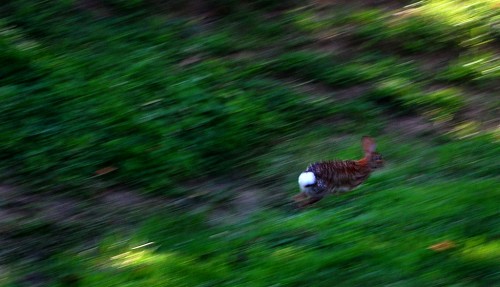 The time stamp on the photo is exactly the same as the shot above. That means they were both shot less than a second apart. It’s less successful (in my opinion). You can see the rabbit is in a different point in his hop. His hind legs are rotating down, which causes a blur within the blur of his body. His front legs must be moving back, because his fur is also a blur in a different direction. He’s moved out of the nice backlighting, so his ears aren’t as nicely defined. His head has moved to an angle where he could almost pass for a cat were it not for the cottontail. He’s also quite a way off 90 degrees from the camera, so the blur doesn’t work quite as well.
The time stamp on the photo is exactly the same as the shot above. That means they were both shot less than a second apart. It’s less successful (in my opinion). You can see the rabbit is in a different point in his hop. His hind legs are rotating down, which causes a blur within the blur of his body. His front legs must be moving back, because his fur is also a blur in a different direction. He’s moved out of the nice backlighting, so his ears aren’t as nicely defined. His head has moved to an angle where he could almost pass for a cat were it not for the cottontail. He’s also quite a way off 90 degrees from the camera, so the blur doesn’t work quite as well.
This is a technique that you don’t use often, but it’s very effective when it works and it’s not hard to do with a little practice. In the old silver film days, it cost money to practice if you actually pushed the button and exposed the film, so we’d sit on the side of the road and practice following cars as the drove by. It’s critical that you do your pan in a smooth, level movement. With digital cameras, it doesn’t cost you anything to actually press the release. Do it.
I’ve never used it, but my strobe and camera have the ability to add another dimension to this technique. You select a slow shutter speed and start your pan. When the shutter is open and you’re following the subject, you get the nice movement blur behind subject. Just before the shutter closes, the strobe will go off, freezing the subject cold. You get the best of both worlds: the illusion of speed, PLUS a tack-sharp subject at the end.

